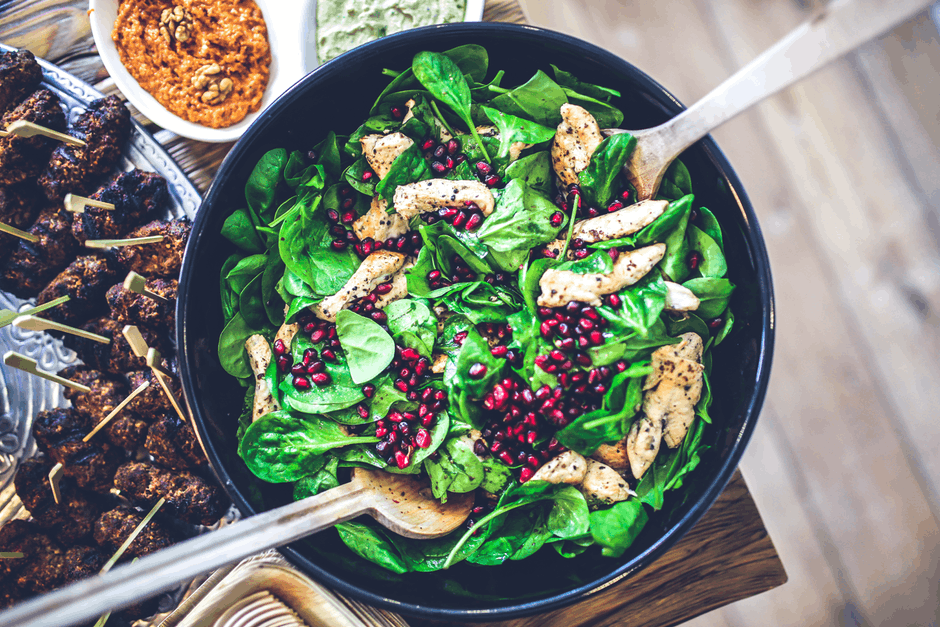We all know that leafy greens are great for us, but what is in superfoods like kale and spinach that is so impressive in the nutrition stakes?
Yes, these green ingredients are rich in folic acid, vitamin C, potassium, magnesium and fibre. Yes, they’re also extremely low in fat. But it’s actually the phytochemicals found within these green beauties that really make them special.
Crammed with lutein, beta-cryptoxanthin, zeaxanthin and beta-carotene, leafy greens are downright great for a huge range of health aspects. From lowering our risk of developing cardiovascular conditions and cancers, to reducing our risk of age-related macular degeneration (the leading cause of blindness in the west), lutein and it’s phytochemical pals can really make a difference to our health over the long term. In fact, studies show that individuals who eat plenty of lutein and zeaxanthin are 40% less likely to suffer from age-related macular degeneration.
So how can you get more of this leafy lutein goodness into your diet? To give you a helping hand, we’ve rounded up the greenery with the greatest levels of lutein and zeaxanthin, and shared some tasty recipes too. Ready, steady, cook!
- Kale (18.3mg of lutein and zeaxanthin)
If you’re a health food lover, you’ll know that kale has been virtually inescapable for the past five years – and for good reason. It’s one of nature’s greatest sources of lutein and zeaxanthin – and it’s very tasty too. This strong, textured leafy green goes great with strong, Eastern flavours. Why not create a creative kale and lemon pepper sabzi or whizz up a surprisingly delicious kale-based smoothie?
- Cress (12.5mg of lutein and zeaxanthin)
You might remember growing this little health-boosting beauty out of the top of an egg as part of a school project, but cress is also a fantastic lutein-rich addition to your diet. Sprinkle into salads and pop into sandwiches for an easy hit, or try out recipes like butternut squash and watercress cannelloni to get more adventurous.
- Raw Spinach (12.2mg of lutein and zeaxanthin)
Raw spinach has slightly more good stuff in than its cooked counterpart, so use it in salads, sandwiches, breakfasts and smoothies to get more out of Popeye’s favourite food. This roasted potato, spinach and parmesan salad makes a satisfying meal, while a spinach salad with bacon and egg is a great way to start the day with healthy lutein instead of heavy breakfast carbs!
- Cooked Spinach (11.3mg of lutein and zeaxanthin)
It might contain slightly less lutein, but cooked spinach is much more versatile than the raw option. With recipes like savoury pancakes with paneer and spinach filling, Bombay potato and spinach pies and red quinoa with spinach, tomatoes and poached eggs, there’s all sorts of deliciousness you can cook up with this lutein-rich ingredient.
- Peas (2.6mg of lutein and zeaxanthin)
Peas may have less lutein that their leafier cousins, but they’re an easy staple to work into your diet to boost your lutein intake. This pea, lime and lemongrass soup is simple and delicious, while these simple veggies also make great accompaniments for more sophisticated mains, like this beautifully steamed cod.
Are luteins on your radar? How do you ensure you’re including plenty of leafy greens in your diet? Share your tips and favourite recipes with other readers below.








One Reply to “How to Boost Your Health with a Lutein-Rich Diet”
Comments are closed.